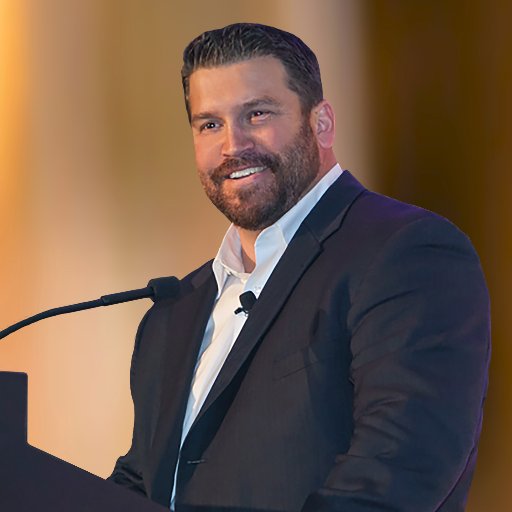A Company’s Greatest Asset
I’ve met with thousands of business Owners over my career. I’ve asked many of them the following question: what is the greatest asset in your business? The answer is almost always the same… “our people.” Why then, is the impact from a PEO to a client’s workforce, not a focal discussion topic during the sales process? Simply put, sales professionals either don’t recognize the importance of this topic, or they don’t know how to articulate the value a PEO brings to a client’s workforce. This article will cover the top five areas a PEO can bring value to a client’s workforce and the subsequent impact it has on the client’s business.
War for Talent
Every business knows that it is harder and more costly than ever to procure and retain top talent these days. A PEO can assist businesses with attracting and retaining talent in a host of areas. Many PEOs will provide businesses with recruiting and onboarding technology to streamline the procurement process. Additionally, PEOs can conduct wage studies to give clients insight into market conditions. Through a PEO’s scaled procurement of master insurance policies, a PEO client can offer its workforce robust health and ancillary benefits at affordable costs. The PEO will provide the client with a 401(k) vehicle and accept the fiduciary liability for the plan to help its workforce secure its financial future. Finally, a PEO can provide the HR department with guidance and training throughout the lifecycle of employment.
Subsequent Impact: A business is more likely to secure and retain top talent when partnered with a PEO. As a result, the company is stronger and more likely to grow and increase profit, while less likely to go out of business, as evident in 3rd party white papers.
Streamlined Efficiencies
The old adage, work harder not smarter, can apply in many ways. With a PEO, a business can streamline its efficiencies surrounding workforce and vendor management. A PEO’s technology connects all facets of employee engagement, outside of directly managing the workforce. An employee, and management, can house pertinent data in the HRIS, communicate PTO via online widgets, connect to payroll, tax filings, 3rd party vendors, insurance, HR, retirement plans, benefits administration, and more via the PEO’s technology. Additionally, the PEO will have trained experts who are certified in their respective disciplines that will support each facet of workforce management. A good PEO will offer high-tech and high-touch service to its clientele.
Subsequent Impact: PEOs streamline workforce management. As a result, a business will reduce liability resulting from mistakes, obtain appropriate answers and solutions more quickly, and reduce administrative and low-level HR functions internally, thus increasing administrative workforce capacity within the business.
Workforce Optimization & Training
Once a business has attracted top talent, and streamlined workforce management efficiencies, optimizing its workforce through training and guidance will create a stronger more valuable workforce. PEOs often offer their clientele over 700+ workforce trainings to help improve the workforce at a client level. Employees that continue to learn will contribute at a higher level than those that don’t. Taking advantage of these trainings will allow a client’s workforce to increase its abilities. As a result, a client’s workforce is stronger, and with increased production out of the existing workforce, a business may not need to scale its workforce at the same ratio as it grows.
Subsequent Impact: A trained workforce is a more productive workforce. Training and guidance provide the workforce with opportunities for promotion. Moreover, when a workforces’ output increases, the company can scale its SG&A at a more favorable ratio, thus equating to increased profit margins.
Capacity & Bandwidth
PEOs bring a team of experts into the equation when partnering with a business. Outside of a PEO, no company got into business to manage workforces. Though as a business scales, it is essential to manage the business. Additionally, with the chaos of regulatory requirements in this country, not managing the workforce has a price tag. When this team of experts is infused into the equation, client workforce capacity increases for three primary reasons: 1) the PEO has streamlined workforce efficiencies through its technology and support, 2) The PEO has trained the workforce and therefore they are more efficient and capable than before, and 3) the PEO team itself carries some of the load that the workforce was previously responsible for. As a result, a client workforce will have increased capacity once partnered with a PEO if it takes advantage of these available options.
Subsequent Impact: A business’s workforce will experience increased capacity once partnered with a PEO. The business can then reallocate its talent towards present and future business initiatives, i.e. the reason the company got into business in the first place (it wasn’t to manage people). Typically, this results in faster growth rates, increased profitability, reduced liability, and a happier workforce.
Profit Expansion and Liability Reduction
Though the PEO’s extensive offering, businesses will experience increased profit and simultaneous liability reduction. A PEO can reduce the cost of employing a workforce through scaled procurement of insurances, reduced unemployment tax burdens, reduction in turnover and subsequent replacement and loss of productivity costs, etc. Additionally, a PEO will free up capacity, streamline efficiencies, and help optimize the workforce which can reduce SG&A expenses. Finally, a PEO puts controls and safeguards in place to mitigate employment, unemployment, insurance, retirement, regulatory, and legal liabilities.
Subsequent Impact: A company that is partnered with a good PEO has a greater probability of increasing its profit while reducing its liabilities. Moreover, the company can get back to the core of why the business was initially started.
Author

Rob Comeau is the CEO of Business Resource Center, Inc., a business consulting and M&A advisory firm with a niche focus on the PEO and peripheral industries. Rob is also the Founder and featured Author of NPG, a top publication on the PEO industry.

 using WordPress and
using WordPress and